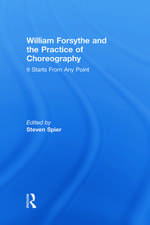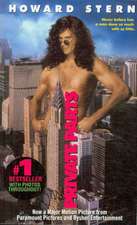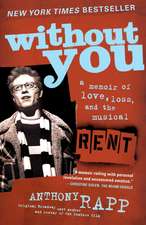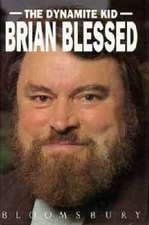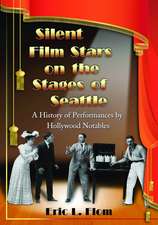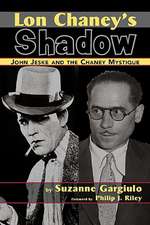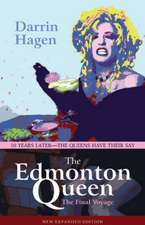Acting Stanislavski: A practical guide to Stanislavski’s approach and legacy
Autor John Gilletten Limba Engleză Paperback – 12 feb 2014
Preț: 169.91 lei
Preț vechi: 194.08 lei
-12% Nou
Puncte Express: 255
Preț estimativ în valută:
32.52€ • 35.34$ • 27.34£
32.52€ • 35.34$ • 27.34£
Carte disponibilă
Livrare economică 31 martie-14 aprilie
Livrare express 14-20 martie pentru 55.08 lei
Preluare comenzi: 021 569.72.76
Specificații
ISBN-13: 9781408184981
ISBN-10: 1408184982
Pagini: 344
Ilustrații: 20 illus
Dimensiuni: 156 x 234 x 20 mm
Greutate: 0.54 kg
Ediția:Revised
Editura: Bloomsbury Publishing
Colecția Methuen Drama
Locul publicării:London, United Kingdom
ISBN-10: 1408184982
Pagini: 344
Ilustrații: 20 illus
Dimensiuni: 156 x 234 x 20 mm
Greutate: 0.54 kg
Ediția:Revised
Editura: Bloomsbury Publishing
Colecția Methuen Drama
Locul publicării:London, United Kingdom
Caracteristici
Presents Stanislavski's theories of acting in sequential, practical exercises, simplifying the process for the student and grounding the theory in its essential home: practice.
Notă biografică
John Gillett is the author of Acting on Impulse - Reclaiming the Stanislavski Approach (Methuen Drama, 2007); the second extended edition, Acting Stanislavski - A practical guide to Stanislavski's approach and legacy (Bloomsbury, 2014); and co-author with Christina Gutekunst of Voice into Acting - Integrating voice and the Stanislavski approach (Bloomsbury 2014, and now in a second edition, 2021). He has also written articles on acting and the preface for a new edition of Stanislavski's Creating a Role (Bloomsbury Revelations, 2013). John trained as an actor in the approach of Stanislavski and Michael Chekhov and has worked widely in theatre, radio, film and television. He has taught and directed in many drama schools, including RADA, LAMDA, CSSD, and GSA, and was Head of the Post Graduate Acting Course at East 15. John has run acting workshops here and aboad, is a member of Equity and has had a prominent role in the writing of recent arts policy documents for Equity and the Creative and Leisure Industries Committee of the TUC (2019).
Cuprins
Acknowledgements Foreword, by Sam WestIntroduction - acting in context PART ONE STARTING FROM NOTHING Chapter 1 Awareness Chapter 2 Ease and focus PART TWO IMAGINATION AND ACTION - CREATING THE FOUNDATIONS Chapter 3 Acting in circumstances Chapter 4 Acting with others Chapter 5 What do I want? PART THREE DEVELOPING THE IMAGINARY REALITY - IMAGES, SENSING, FEELING Chapter 6 Imagining the action Chapter 7 Sensing Chapter 8 Feeling Chapter 9 Atmosphere PART FOUR EXPLORING TEXT AND CHARACTER Chapter 10 Meeting the play Chapter 11 Meeting the character PART FIVE CREATING THE LIFE OF THE ROLE Chapter 12 Discovering the action - active analysis Chapter 13 Embodiment - physical expression of the character Chapter 14 Refining the role Chapter 15 The character PART SIX BEYOND THE ROLE Chapter 16 Acting ethics Chapter 17 Working together Chapter 18 An open conclusion A map of the organic acting process Glossary Selected bibliography Index
Recenzii
A manual full of enabling, easing exercises - it will enable you to analyse any scene. The cry of the actor at sea, 'I don't know what I'm doing,' should, with this book, become a thing of the past.
This is probably the single most useful and powerfully presented summation of Stanislavski's approach to acting available ... What sets this book apart from other recent studies is that the Stanislavskian approach has been filtered through a lifetime of practice - the'concentrate' that emerges is crystal clear, an explication of the 'system' which makes absolute practical sense for the actor ... The primary strength and authority of this book is derived from the single fact that he is an actor addressing other actors with the impassioned objective of encouraging them to take responsibility for their own art and to have 'respect' for what they do.
I'd recommend this book to anyone wanting an introduction to Stanislavksi or Michael Chekhov or acting in general.
Contains all the important things that need to be said about learning to act . . . in an extremely logical and sensible manner
It sets the record straight in terms of what Stanislavski was actually about. Its invaluable.
This is an excellent book - one of the best of its kind that I have read. John Gillett's book is way out in front in that it offers both scholarship and really sound practical strategies
If an actor was to have just one book on the process of acting on their shelf it should be this one
[Acting Stanislavski] feels significantly more substantial, more comprehensive, and clearer than other recent studies of Stanislavski . While this book is a fantastically expansive introduction for the uninitiated, it will also provide real nourishment and clarity for the many actors who have studied bits of Stanislavski here and there and are looking for something more comprehensive. Or one could simply dip into the book for some fresh studio exercises to use in the classroom . This balance between the practical and scholarly, as well as the book's sensible, logical structure, would make it a great course book for the more technically-minded and historically-curious of acting students, while its glossary and index make it one the best reference books about acting on the market . A deep, authentic, and mature love of the theatre shines throughout the writing. This is the clearest, most comprehensive, and most ambitious book on Stanislavski in existence, from a writer who clearly has a lifetime's experience of dedicated exploration as an actor, teacher, and director.
This is probably the single most useful and powerfully presented summation of Stanislavski's approach to acting available ... What sets this book apart from other recent studies is that the Stanislavskian approach has been filtered through a lifetime of practice - the'concentrate' that emerges is crystal clear, an explication of the 'system' which makes absolute practical sense for the actor ... The primary strength and authority of this book is derived from the single fact that he is an actor addressing other actors with the impassioned objective of encouraging them to take responsibility for their own art and to have 'respect' for what they do.
I'd recommend this book to anyone wanting an introduction to Stanislavksi or Michael Chekhov or acting in general.
Contains all the important things that need to be said about learning to act . . . in an extremely logical and sensible manner
It sets the record straight in terms of what Stanislavski was actually about. Its invaluable.
This is an excellent book - one of the best of its kind that I have read. John Gillett's book is way out in front in that it offers both scholarship and really sound practical strategies
If an actor was to have just one book on the process of acting on their shelf it should be this one
[Acting Stanislavski] feels significantly more substantial, more comprehensive, and clearer than other recent studies of Stanislavski . While this book is a fantastically expansive introduction for the uninitiated, it will also provide real nourishment and clarity for the many actors who have studied bits of Stanislavski here and there and are looking for something more comprehensive. Or one could simply dip into the book for some fresh studio exercises to use in the classroom . This balance between the practical and scholarly, as well as the book's sensible, logical structure, would make it a great course book for the more technically-minded and historically-curious of acting students, while its glossary and index make it one the best reference books about acting on the market . A deep, authentic, and mature love of the theatre shines throughout the writing. This is the clearest, most comprehensive, and most ambitious book on Stanislavski in existence, from a writer who clearly has a lifetime's experience of dedicated exploration as an actor, teacher, and director.


